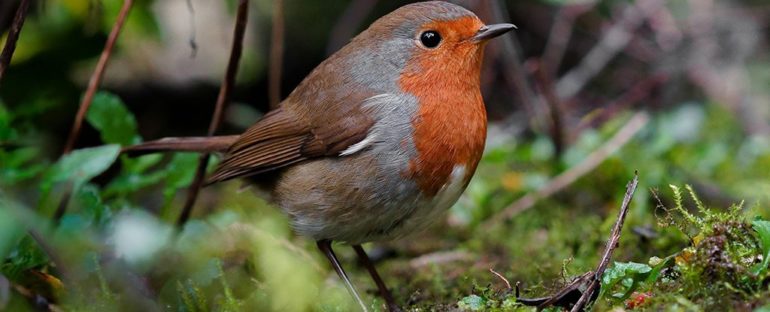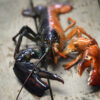When you’re as tiny as a European robin, crossing the continent for the winter is no small feat. We now know its secret to keeping on track over vast distances – an innate ability to harness the weirdness that sits at the heart of quantum physics.
Long hypothesized as means by which animals might sense the tug of Earth’s weak magnetic field, a non-classical response to light has been observed taking place within a protein expressed in the eyes of a night-migratory songbird.
A collaboration between researchers from institutions around the globe put the small bird’s cryptochrome protein complex through its paces to see how it responded to being illuminated continuously and in flashes of blue light, both inside and outside of a weak magnetic field.
While it stops short of proving the small birds rely on a quantum quirk of chemistry to stay on course as they cross Europe, the finding provides crucial evidence in support of the theory of magnetoreception’s role in navigation.
Earlier this year a team of researchers from the University of Tokyo found a similar protein in humans was capable of responding to blue light in different ways, depending on the strength of a nearby magnetic field.
Certain atoms in the protein with a lone electron swinging about in its outer shell could be partnered with another solitary electron in what’s known as a radical pair, effectively entangling their characteristics.
The nature of this partnership can be affected by a magnetic field. Struck with a specific dose of energy in the form of blue light, a radical pair will fluoresce in different ways depending on how they’re entangled.
In other words, the quantum nature of the relationship between two electrons in the right structure of protein can use light to signal different strengths of a magnetic field, even one as weak as Earth’s.
This was nothing short of an astonishing finding, one that strongly implied there was more to biochemistry than classical physics could explain all on its own.
What’s more, it had the potential to explain how some animals, like migratory birds, just might ‘see’ the alignment of field lines distinguishing the planet’s magnetic compass points, a skill that would be handy as a navigational aid.
There was just one problem – that cryptochrome was a human one, from inside human cells. What it implies for our own biology is an open question, but the potential for cryptochrome’s influence inside other animals remained debatable.
Room for debate has now narrowed significantly, however, with the discovery that a cryptochrome purified from the genome of the European robin (Erithacus rubecula) – an animal that occasionally migrates from frigid Russia climes across to warmer habitats in Europe’s west and south – shows the same magnetically induced quantum behavior.
The researchers compared the robin’s cryptochrome with a similar protein complex copied from chickens (Gallus gallus), a bird not known for taking journeys any more arduous than crossing the occasional road.
In addition, the researchers analyzed cryptochromes from common pigeons (Columba livia). Although famous for finding their way home over long distances, pigeons aren’t technically migratory, leading the team to speculate its own cryptochrome might not have evolved under the same pressures as the robin’s.
The laboratory tests suggest the cryptochromes in robins are up to the job of sensing the subtle influence of Earth’s magnetic field, more-so than those in chickens and pigeons at least.
Future studies will somehow need to be carried out humanely and ethically on live subjects if we’re to confirm quantum actions of cryptochrome are indeed what tells robins which way to go for a warm winter break.
As for what the tiny bird actually ‘sees’ when it detects a magnetic field, that part we will only ever be able to imagine.
Maybe a stronger response to blues in the environment in one direction? Perhaps it doesn’t see anything – just a vague inclination that one way is better than the other?
There are some secrets not even quantum weirdness is capable of revealing.
This research was published in Nature.



